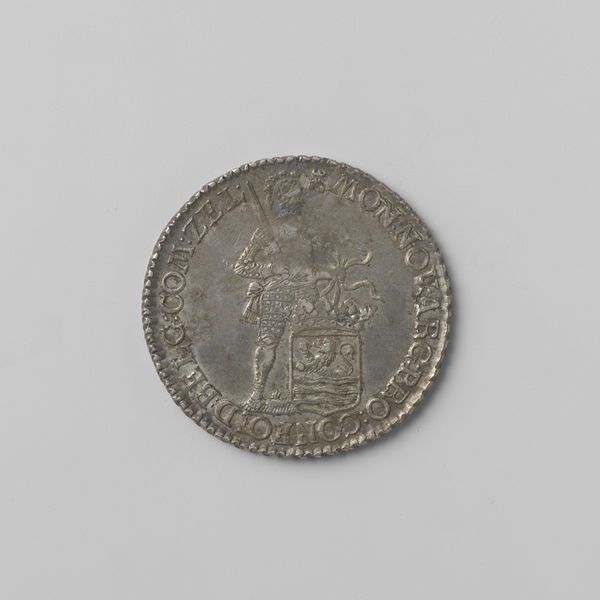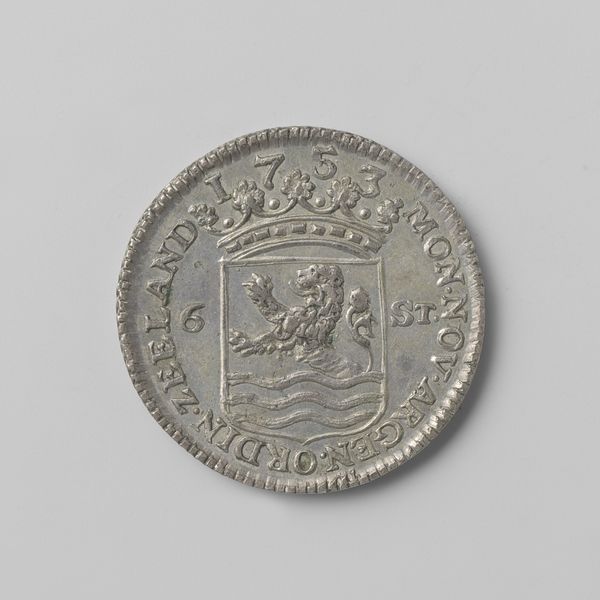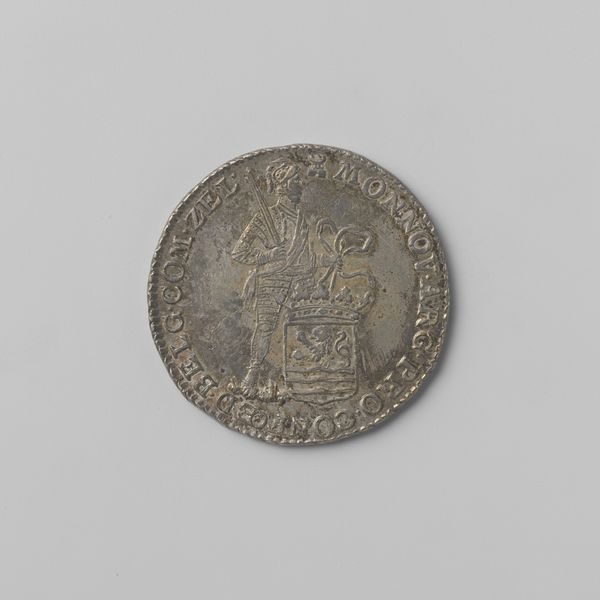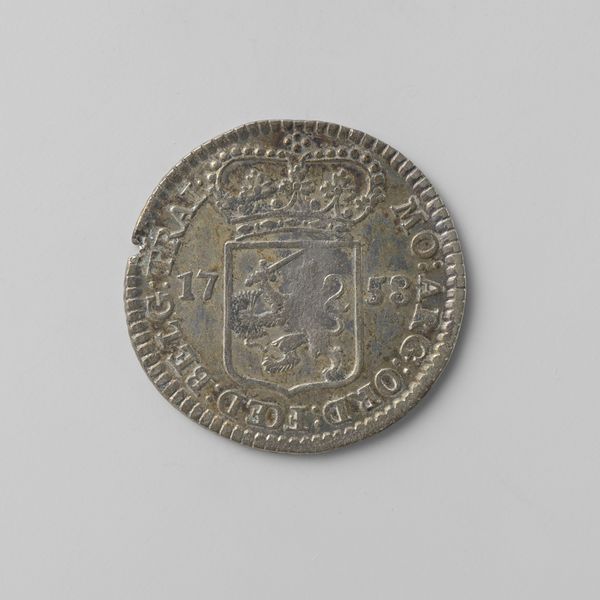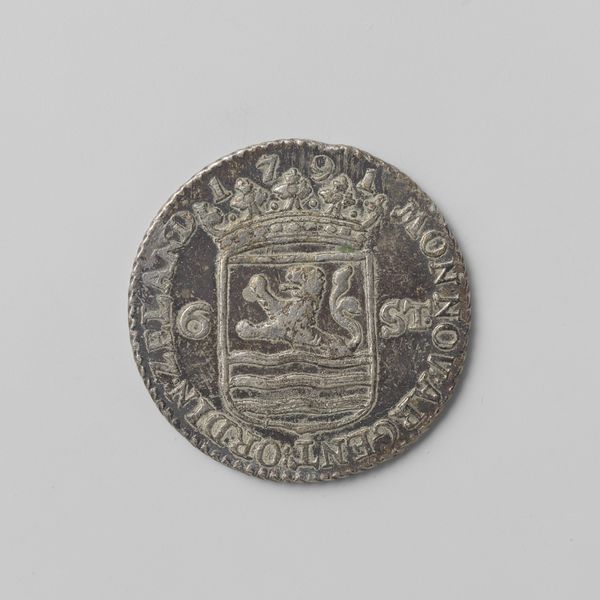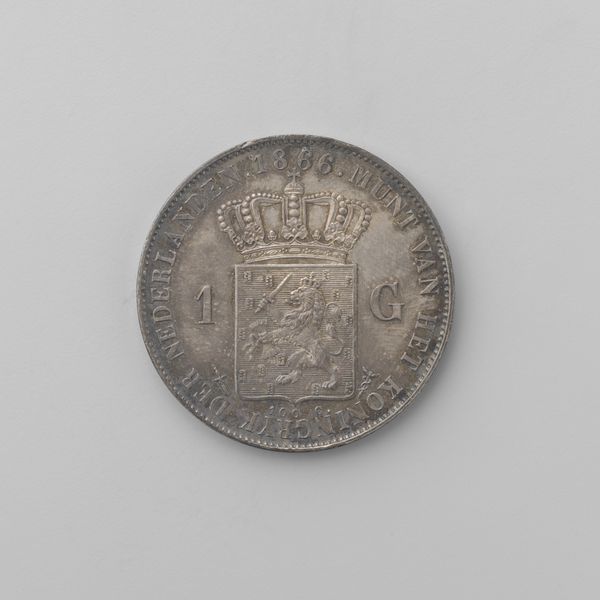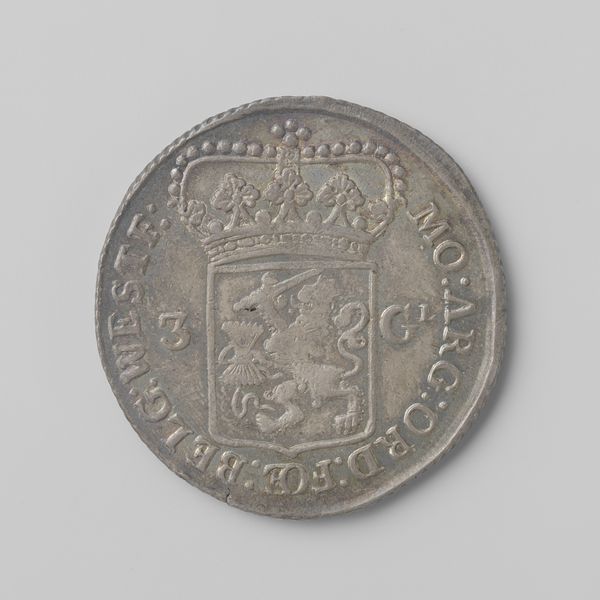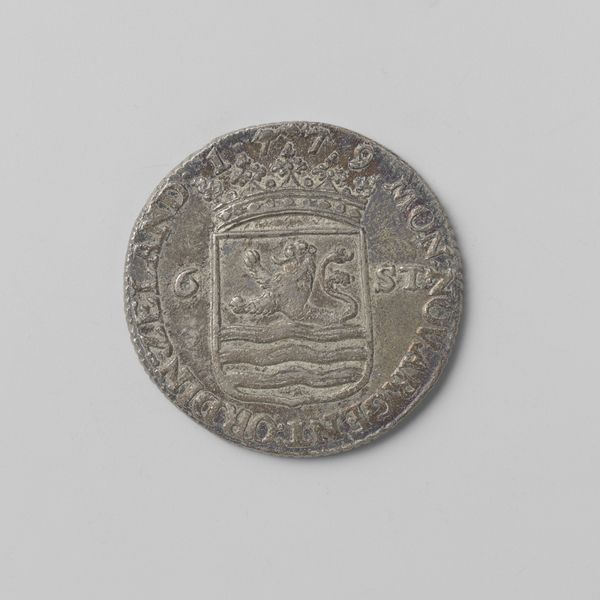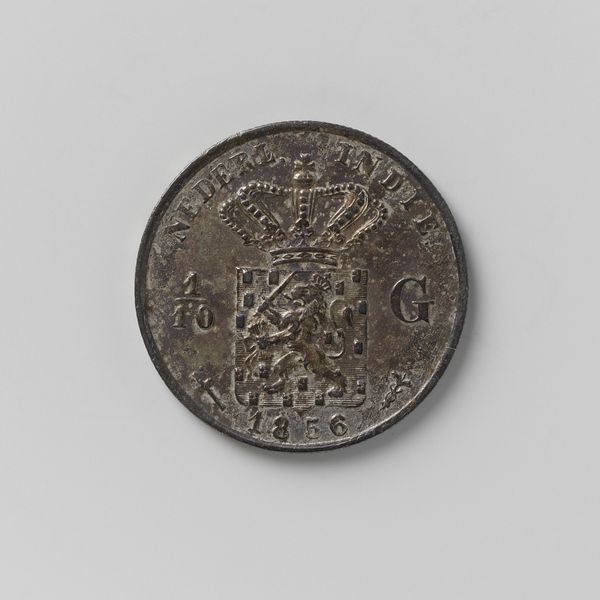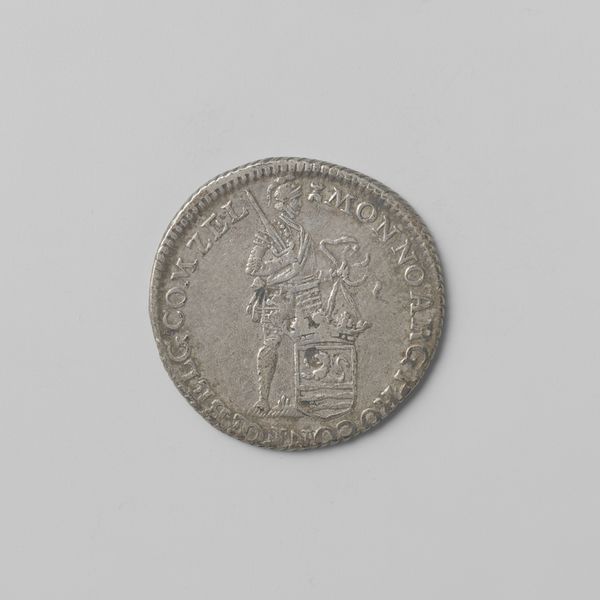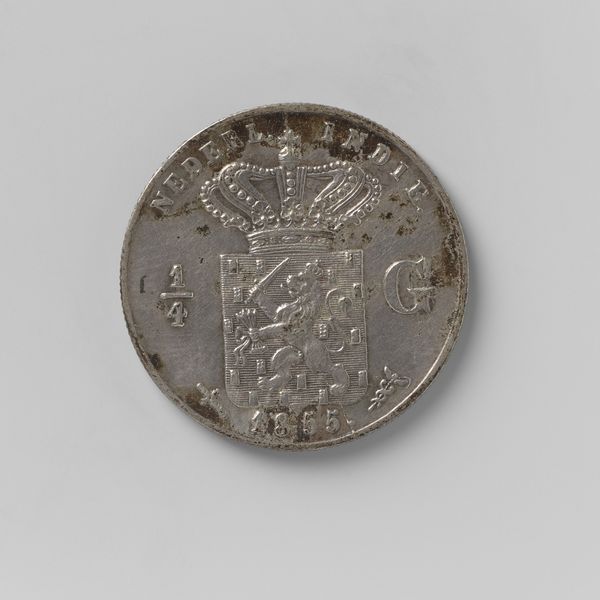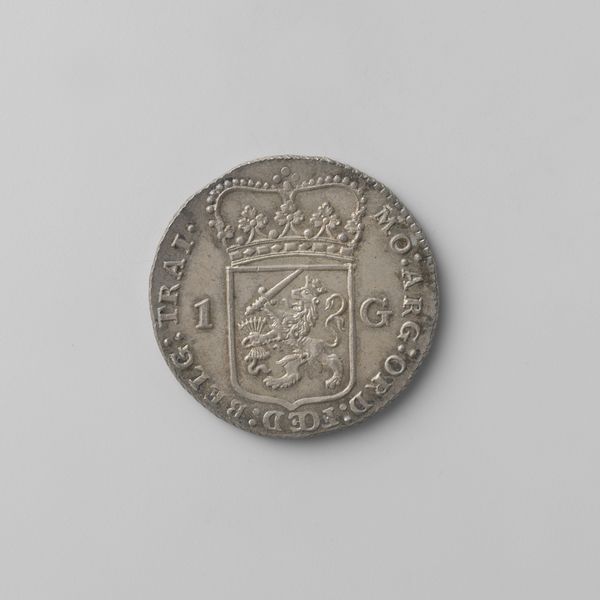
print, metal
# print
#
metal
#
geometric
#
ancient-mediterranean
#
decorative-art
Dimensions: diameter 2.6 cm, weight 4.89 gr
Copyright: Rijks Museum: Open Domain
Curator: Here we have a "Zeeuwse scheepjesschelling," dating back to 1757. These coins served as both currency and a reflection of regional identity in the province of Zeeland. Editor: It’s immediately striking, this small metallic disc. The wear on it speaks volumes; you can imagine it passing through countless hands, each a story of labor and exchange. Curator: Exactly. The material, likely silver or a silver alloy, tells a tale of trade networks and resource extraction during that era. Metalworking itself was highly specialized and controlled. Considering Zeeland's dependence on shipping, this piece becomes very telling. It's far from being a mere monetary instrument. Editor: Yes! The method of production itself is integral to the narrative. This coin wasn’t conjured from thin air. We see an act of labour, turning raw resources into an object with an imposed value – backed, ostensibly, by governance. And those precise, delicate details speak volumes. Curator: The coin's design features a crowned shield, depicting a lion emerging from waves. What meaning can you see beneath the heraldry? Think about what the lion rising from water symbolizes given the broader sociopolitical context. Editor: The crown certainly underlines hierarchical power, but I think the image of a heraldic beast in motion rising from the sea to express power is just brilliant, it really speaks about Zeeland. Think about ship-building trades or marine resource dependence. It encapsulates economic and physical control. What was this worth, back then, relative to the labor required to earn it? What societal rifts did this representation reinforce, perhaps unconsciously? Curator: Such interesting thoughts! The question of symbolic meaning raises considerations of access. How much control did diverse groups actually have over this system, its representations, and their destinies within it? To what extent was agency distributed? Editor: Agency and control. Absolutely, the material culture gives access to the political history. Each impression, mark, the smoothness and roughness of surfaces, invites critical questions of socio-economic factors. Thanks to its scale, the coin’s tactility speaks about these concerns. Curator: Looking at it in terms of the province identity really does highlight power, maritime might and questions around equity. Editor: Indeed. It goes far beyond mere monetary value. The materiality grants insights into production, society, labour, identity. A lasting statement of that society in 1757!
Comments
No comments
Be the first to comment and join the conversation on the ultimate creative platform.
